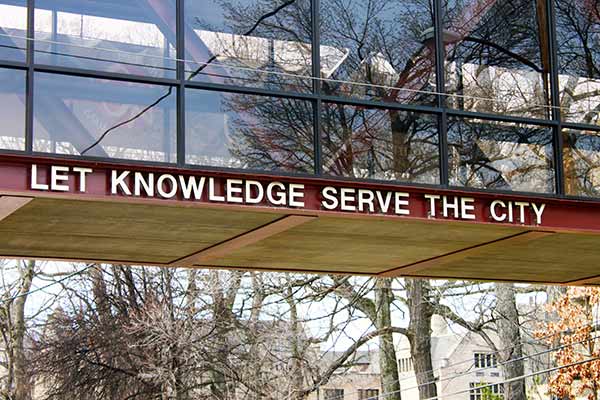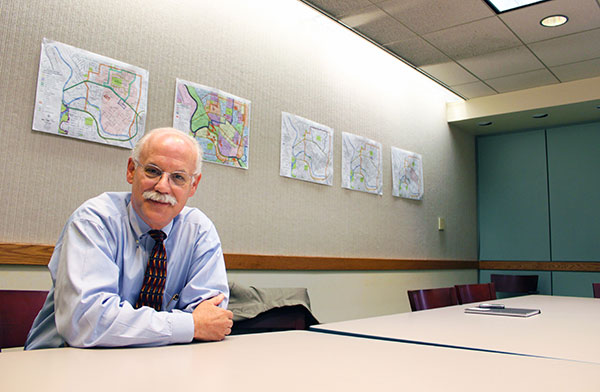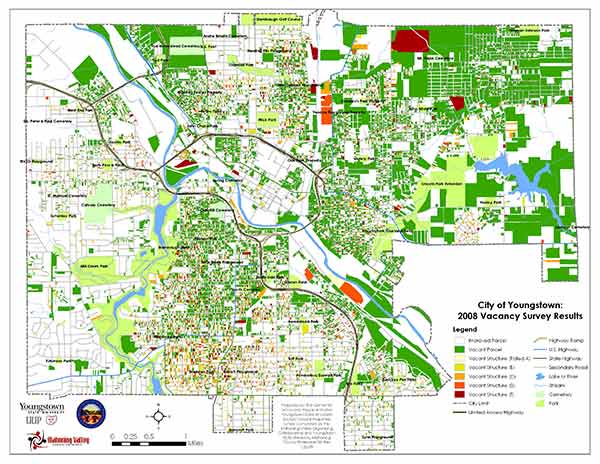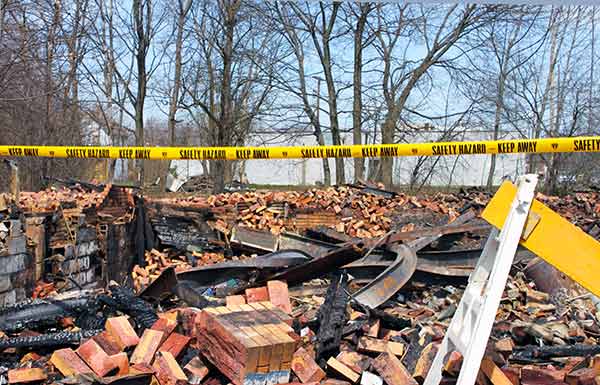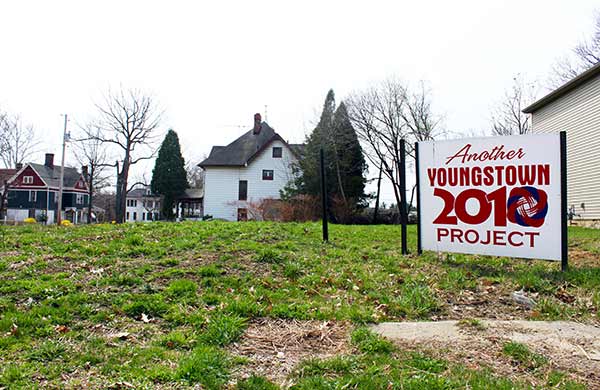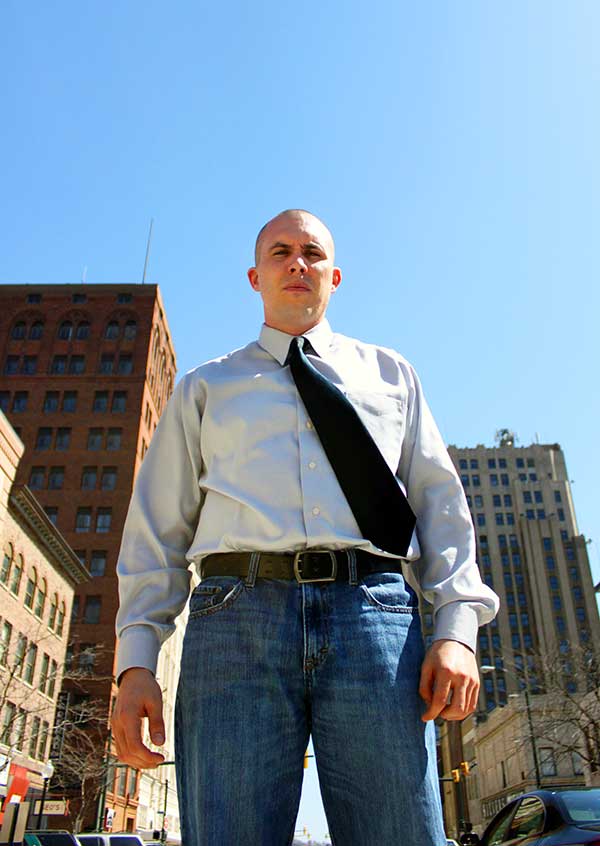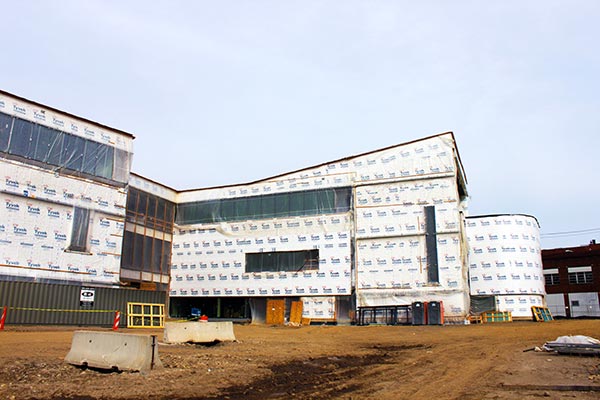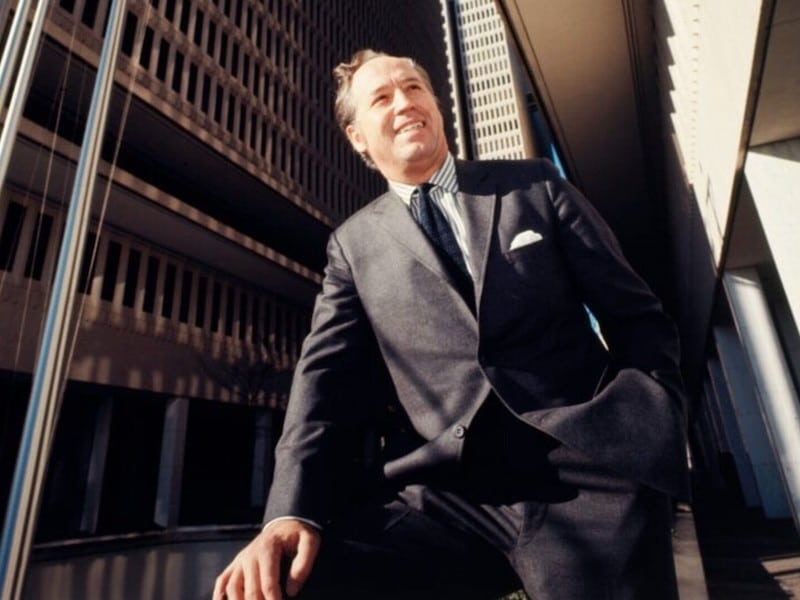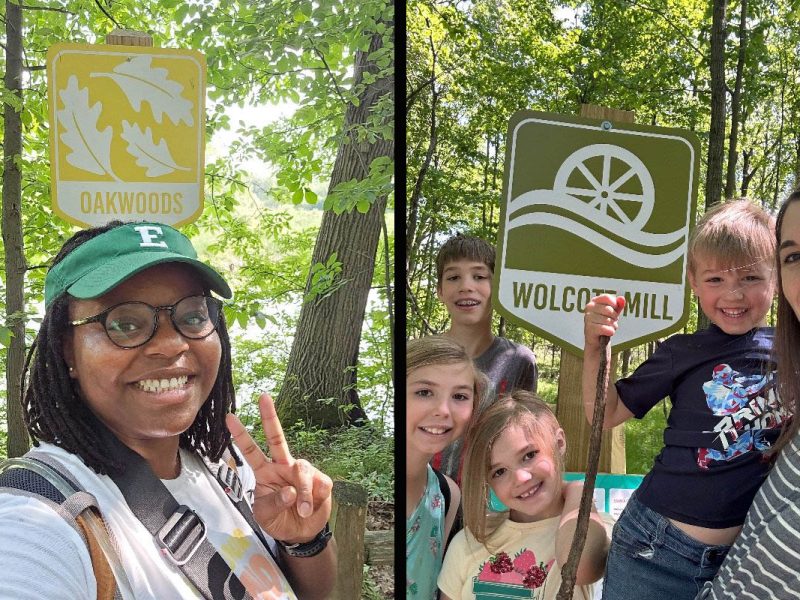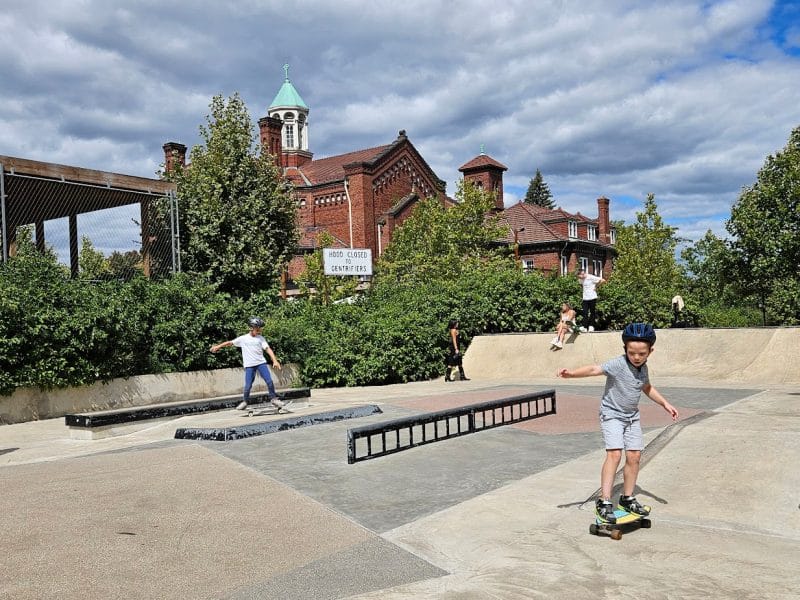Shrinking right: How Youngstown, Ohio, is miles ahead of Detroit
Youngstown is like Detroit’s Mini Me. The small, Ohio, former steel-belt city has seen disinvestment, a quickly shrinking population, vacancy and blight. Youngstown’s leadership, however, has engaged the community and created a definitive plan to turn the city around. They are thinking big by acting small.
YOUNGSTOWN, Ohio — By the summer of 2002, Youngstown had lost more than 100,000 residents, more than half of its population just a few decades earlier. The city had convened focus groups of community stakeholders to find a way out. Common themes came up in these groups: We’re not the Youngstown we used to be; we won’t be that Youngstown ever again; and we need to shrink to survive.
Does that sound familiar, Detroit?
A few months later, a few days before Christmas, leaders planned a citywide meeting, co-convened by Youngstown State University President David Sweet and then Mayor George McKelvey. It was to be the culmination of the focus group work. City hall had no idea how many people would actually show up. They thought a few hundred people would be a success.
Youngstown aggressively promoted the event, which would take place in an auditorium across from 34-acre Wick Park, in a neighborhood that was once known for its steel barons but was becoming known for its vacancies.
The city took out ads calling everyone to the meeting — the cynics, the pessimists, the optimists — and used frank language, booking this as the last, best chance to save Youngstown from irrelevance. The ads reminded people that others called Youngstown “miserable” and “dying,” words with which we Detroiters are quite familiar.
And even though it was freezing that night, the people came. They piled in, one after another, after another. In the end, 1,400 people showed up, curious to hear what could be done to change their city.
Why Youngstown and Detroit
Youngstown is smaller. Four Youngstowns could fit inside one Detroit. Its population would have to be multiplied by 12 to match the Motor City’s. What lessons could Youngstown possibly offer us? It turns out, there is a lot to glean from the city’s experiences.
“What is happening in Youngstown is happening in Cleveland, in Detroit, throughout the Great Lakes region everywhere,” says Hunter Morrison, director of the Center for Urban and Regional Studies at Youngstown State. “Detroit is not alone, and it’s not failure. … Detroit is so much like Youngstown.”
Both cities face very real and very similar problems. A single industry powered each city’s rise, and each has seen that industry decline dramatically. Both have seen their populations shrink while vacancies increase. Both are dealing with tough revenue, crime and school issues. Yet, at the same time, both have deeply passionate people working to improve their cities at all costs.
The cities’ story lines start out similarly. “You can take ‘Youngstown’ out and plug in ‘Detroit,'” says Youngstown Mayor Jay Williams. “You can take out ‘steel’ and plug in ‘cars.'”
What comes next is different. While, for the most part, Detroit has sat idling, Youngstown has put a finger on its problems, accepted them as reality, and has started dealing with them.
Detroit has no right-sizing plan. In Mayor Dave Bing’s State of the City address in March, he acknowledged this, saying: “We have lacked a true vision and viable plan in Detroit for decades.” He’s talked about a plan, but revealed nothing aside from demolition.
With its Youngstown 2010 plan and strong vision from city leadership, this small Ohio city, on the other hand, has had a big head start, and it’s starting to work.
It happened one night
At the time of that 2002 December meeting, Williams was the director of Youngstown’s community development agency. “The spark was lit that night,” he says. “It was December, it was cold, it was close to Christmas. The meeting was supposed to be an hour and a half long. We were there for three hours. We listened to (the audience). They vented.
“If I had to pick the moment when Youngstown started to change, then it was in that building, it was that night,” the mayor says.
The audience wasn’t shy. Most were sick of the vacancies, of the decline, tired of waiting for Youngstown to change, to do something. Years before, they had been told there could be a defense contractor coming in to save the city, then there was talk of a new factory, and some were still waiting for the steel mills to open back up.
“We were a community in waiting,” D’Avignon says. “We were waiting for that knight in shining armor, waiting for a blimp factory to come and save us.”
Sure, a blimp factory, that’s rich. “You think I’m kidding but I’m not. There was talk of a blimp factory coming here. But nothing appeared. We wanted to overcome that waiting. Take our future into our own hands.”
The vision unveiled at the meeting went to city council and passed 7-0. This would become the impetus for Youngstown 2010, a citywide, community-engaged plan for Youngstown’s future — a future with roughly 70,000 people, not the 170,000 who lived there at the height of its boom, nor the 250,000 people that the city once expected to live there.
The bones of the plan are cemented on four tenets: accept that Youngstown is a smaller city; define Youngstown’s role in the new regional economy; improve Youngstown’s image and enhance quality of life; and a put out a call to action.
The tenets aren’t exactly mind blowing. Youngstown hasn’t loaded the chamber with silver bullets, but at least they’ve had clear targets. Youngstowners also approved, by 74 percent, a city charter amendment that says the city has to revisit and reassess the plan every 10 years, after the Census. Youngstown 2010 is a roadmap.
Here darlin’ in Youngstown
Youngstown had a plan in the 1950s. Sitting atop the powerful steel industry, Youngstown expected to hit 250,000 people, and the city built out infrastructure to accommodate that number. The plan was revised in 1974, three years before Youngstown Sheet and Tube — one of the largest steel mills in the world — closed, furloughing 5,000 jobs in a weekend. Locals call that day “Black Monday.” Youngstown, for the next four years, would see more and more steel plants close and 40,000 manufacturing jobs disappear.
The last Census had Youngstown’s population at 82,000. This year’s Census will have that number even lower. “I tend to think (the population of Youngstown) will be close to 65,000,” says Tom Finnerty Jr., associate director for YSU’s Center for Urban and Regional studies and lead writer for the Youngstown 2010 plan. “We’ll be hard pressed to hit 70,000 that’s for sure.”
About 43 percent of Youngstown’s land is vacant; and, as of January of last year, Youngstown had 4,500 vacant structures throughout the city.
“Shrinking is un-American in a way,” Morrison says. Urban areas, by nature, are about growing either up or out. Size and population define cities.
But does bigger define quality of life? The Youngstowners said no. “Acceptance was the most significant part of that plan,” Morrison says. “Accepting we’re going to be a smaller city was key.”
“Smaller doesn’t mean giving up. And (Youngstown) started to see that,” Williams says. “This is a community with a great heart that has been defined by failure because of its one industry. The industry that made us great no longer existed in the way it did. But we didn’t have to be ashamed of that. We were the butt of jokes and we were sick of it.”
And no one was waiting in the wings to save them.
“D.C. isn’t going to come in and help us,” he continues. “Maybe they’ll play a role but that wasn’t going to happen. There wasn’t going to be a blimp factory or some defense firm coming in. It was just us and we were doing something about it.”
Community engagement
The Youngstown 2010 plan came together in January 2005, a little more than two years after the vision was unveiled. An audience of 1,300 was on hand for the unveiling. The summer and fall leading up to this was spent educating and reinforcing the community with the tenants of the vision and enforcing the importance of having a solid plan.
Youngstown’s 31 neighborhoods were grouped into 11 clusters, and meetings were held in each cluster. Attendance was high. Everything was transparent, and it was all on the table.
“Collaboration was key to this entire process,” says Williams. It was important that this wasn’t just a city plan. It needed to be a plan brought on by the people, enforced by the people, with city facilitation. And, that’s exactly what they got. “From the city leaders to Youngstown State to the community, it was a 180-degree turn,” Williams adds. “This wasn’t going to be another run of the mill city plan. This was going to engage.”
“The planning process was very important part of how we did it,” says Morrison. “There was a lot of suspicion of politics. Involving the community made the difference.”
Community organizer Phil Kidd agreed. “They allowed honest discourse, to talk about the obvious problems in every neighborhood.” Kidd had started a”Defend Youngstown” campaign to, well, you get the picture.
A plan and a lot of land
But where does the heart of Youngstown 2010 lie? A plan that rethinks a city, let alone shrinks one, is complex, multi-faceted and damn hard to pin down.
Beyond trying to diversify its economy, it is about Youngstown’s land, namely what to do with the oversized infrastructure, 4,500 vacant structures, and 43 percent vacant land. Ring any bells, Detroit?
In Williams’ first term, he demoed more abandoned houses than the previous four years combined. Youngstown, on average, had been allotting $300,000 toward demos, dropping 150 houses a year. Between 2006 and 2010, Williams has averaged a $1 million demo budget, bringing down 370 abandoned, unsafe structures.
In addition, the administration also made a point to focus demos on the gateways to the city. “It was strategic. And removing that blight built confidence in the neighborhood,” he says.
Fresh dirt
Freshly demoed lots are visible throughout the neighborhoods of Youngstown. But that’s not the goal. An empty lot is better than blight, but something constructive is better than an empty lot. For example, major blight is hard to come by along Market Street, heading toward downtown. Manicured lots with flowers, trees and rocks dot this main artery where there was once blight and abandonment.
The urban agriculture movement is growing there, too. Grow Youngstown not only advocates for urban agriculture, it also distributes fresh, local produce to underserved neighborhoods in the city. In a neighborhood in the south end of Youngstown called Idora, an urban 4H club was started. The neighborhood association, in partnership with the Youngstown Neighborhood Development Corp. (YNDC), is working toward creating a block-long urban garden that once was covered with blight (among other things).
Additionally, YSU has put together a proposal to turn part of Youngstown’s east side into a wetlands mitigation bank. Parts of the east side look as if roads were laid over a forest and someone forgot to build the houses.
Youngstown still has a lot of neighborhood blight to tackle. The city’s targeted demo list has 1,100 structures on it, but has funds to knock down 250. “If we had $8 million we could bring them all down right now,” says D’Avignon. “But we don’t.”
Let’s get it started
Youngstown isn’t done; but at least they’ve started, and they have a clear vision. What’s clear here, however, is that Detroit has a lot of catching up to do, and the current administration has yet to move much beyond talk.
Mayor Dave Bing’s land-use plan has yet to come to light. We know he plans to demo 3,000 structures off the bat and a total of 10,000 structures by 2014. Everything else has been hush-hush. We know the city, through the Kresge Foundation (which declined interview requests), brought in famed urban planner Toni Griffin from Newark, NJ, to help the city either create or facilitate the plan. And we know, through Data Driven Detroit (which did not respond to multiple queries), the info is out there that will help with the planning. But the city still hasn’t unveiled a document, any language, or honest-to-goodness direction.
Williams, though, says Bing’s acknowledgment is a start.
“The fact that he is the mayor, and talking about it, and it’s getting so much attention, should show you the importance of it,” Williams says. “We can still get our arms around Youngstown. Detroit is just so big … he’ll have to break up the city into manageable projects with achievable goals.”
And that’s OK, because bigger doesn’t always mean better. “Detroit is going to be OK as a smaller Detroit,” says the mayor of Youngstown. And he should know.
What’s in the Youngstown, Ohio, 2010 plan? Read more of Terry Parris Jr.’s coverage here.
Terry Parris Jr. lives in Southwest Detroit and writes for Model D. While reporting this story in Youngstown he sampled beer from their Rust Belt Brewery and didn’t bring us any back. We’re still bitter. Send feedback here.
